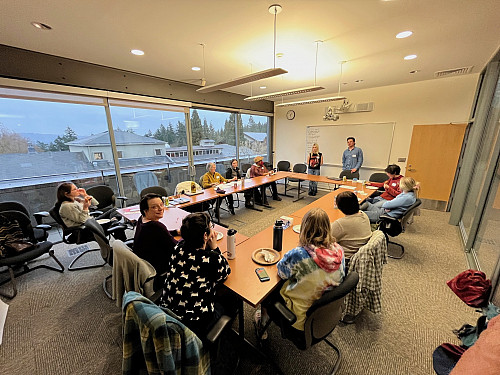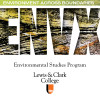ENVX Symposium Blog
Structuring Engagement: Preparing Students to Facilitate Our ENVX Conversations
Introducing our new facilitators to CD training and the ENVS situated approach.
Author

To start the evening, all attendees shared pizza and refreshments, being urged to sit next to someone they didn’t know, to discuss the following prompt: “When was a time that you had to find common ground with someone?” Kicking off the training with food and this relevant conversation starter was a great way to lay a groundwork of trust between attendees.

After the enriching experience of a CD dialogue, Professor Jim Proctor guided attendees through three key features of the ENVS program: Engagement, Asking Questions, and Situated Research. We strive to promote engagement by continually understanding difference as a set of puzzle pieces, able to fit together with mindful effort. We are particular and intentful in the way we ask questions, identifying them either Descriptive, Explanatory, Evaluative, or Instrumental. We situate our research in an Hourglass, first framing research broadly, second focusing it on a situated context, and finally zooming out to consider broader implications.

This event was successful in briefing our student facilitators on the goals and intentions of our future working group conversations, and even gave our ENVX committee inspiration towards the structure of those events. We would like to extend our gratitude to Janet Bixy & Clara Daikh, the volunteer facilitators, and ENVS faculty for joining us and leaning into this engagement experiment.
Environmental Studies is located in room 104 of Albany Quadrangle on the Undergraduate Campus.
MSC: 62
email envs@lclark.edu
voice 503-768-7790
Symposium Advisor Jim Proctor
Environmental Studies
Lewis & Clark
615 S. Palatine Hill Road
Portland OR 97219
